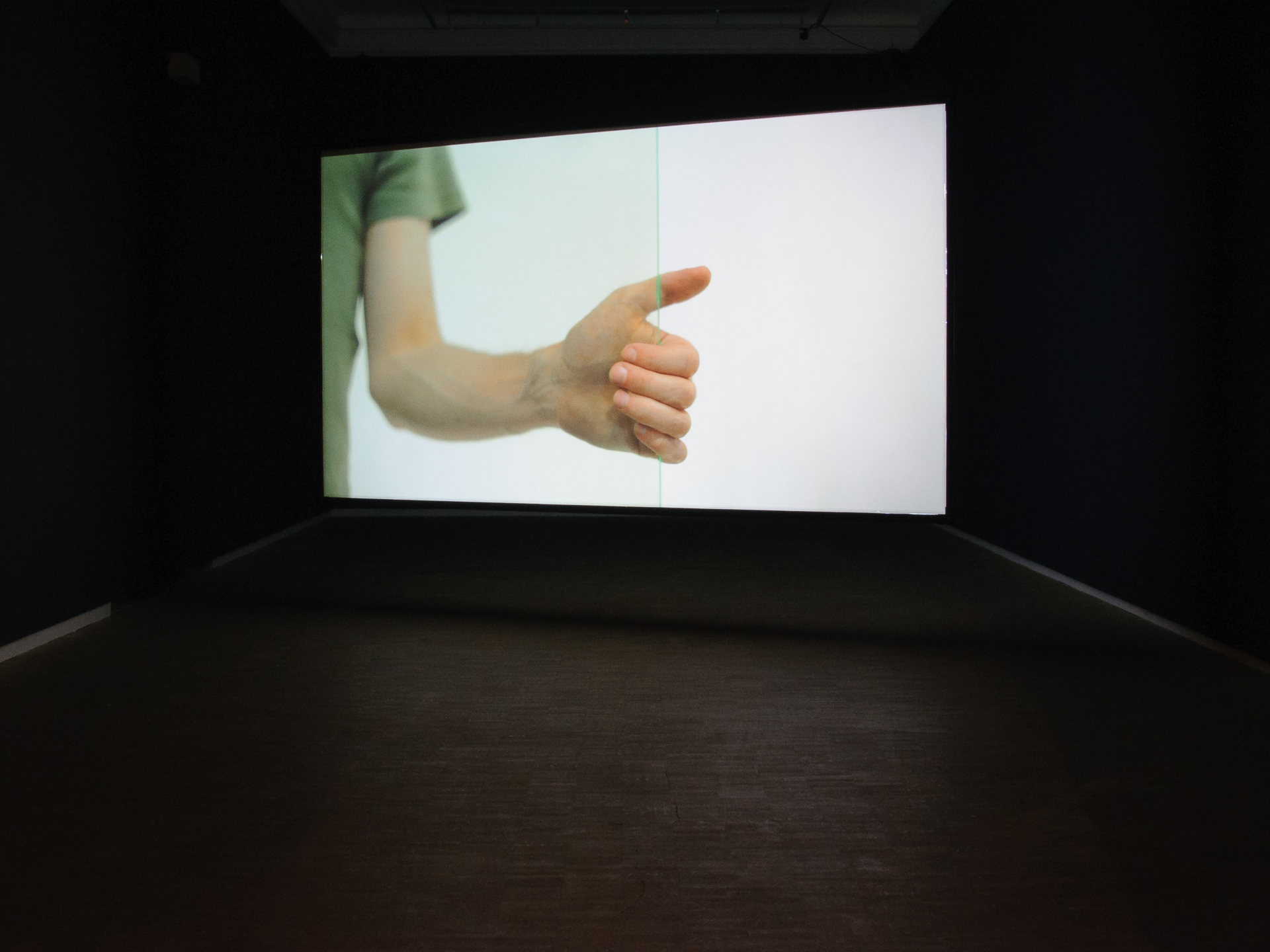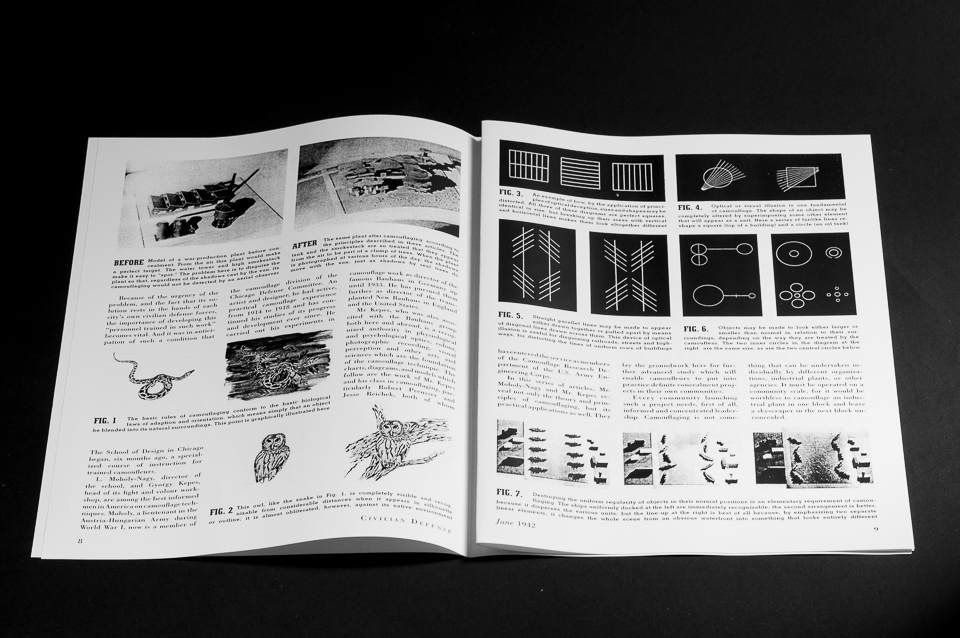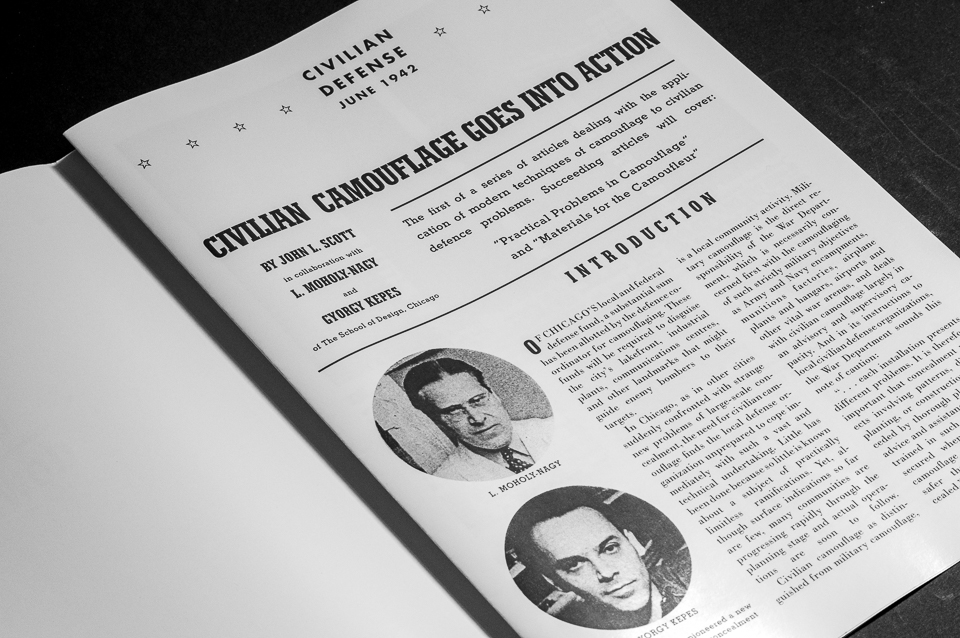A exhibition about camouflage and the ways we orient—or lose ourselves—within the built environment.
Video: Clip from 'up there down there' Video installation on two-way projection screen. Looped, 4min 45sec
PROJECT —
up there down there
Year —
2011
ROLE —
artist
creative direction
producer
“Camouflage is the art of visual deception. And an understanding of the nature of visual deception demands an understanding of the fundamentals of visual perception.”
— John L. Scott, Laszlo Moholy- Nagy, and György Kepes
'up there down' there explores how cityscapes shape our perception, drawing from urban planning strategies and the work of György Kepes and Kevin Lynch. The exhibition includes a video installation, sculptures, and historical artefacts. The sculptures—curved plexiglass objects in varied tones and dimensions—carry words like “distortion,” “form simplicity,” and “visual scope,” drawn from Kepes’s 'Principles of Camouflage' and Lynch’s 'Form Qualities'. The video installation features a tracking shot gliding over the sculptures, their movement orchestrated by two figures. Accompanied by a four-channel soundscape drawn from the city’s harmonics and cacophony, the installation becomes a shifting field of image, sound, and space.



György Kepes: Juliet with Peacock Feather (1938)
Two historical artefacts link Kepes’ theories to camouflage: his photograph 'Juliet with Peacock Feather' (1938) and the article 'Civilian Camouflage Goes into Action' (1942) included in the exhibition as a guidebook. The artist considers camouflage as a lens between two perspectives—street view and aerial view—asking whether city planning, architectural styles, or government branding function as forms of camouflage. If so, how does this shaping of perception affect those within it?
In 1942, Kepes taught urban camouflage techniques at the New Bauhaus in Chicago, subverting his design principles into strategies of miscommunication. Decades later, Lynch applied Kepes' ideas to urban planning, defining qualities like "directional differentiation" and "visual scope" as tools for navigating the city.



'up there down' there operates on two levels: the sculptures and video installation stage orientation and disorientation as an exhibitionary experience, while the artefacts frame perception as something designed and mediated. In doing so, the work questions the impact of contemporary urban planning and the aestheticisation of identity in the city.
Full Project Credits:
Director of Photography: Michael Poetschko
Camera Assistence and Lightning: Chui Yong Jian
Focus Puller: Joachim Glaser
Editor: Michael Poetschko
Citizen One: Rosina Huth
Citizen Two: Clemens Buchegger
Sound Designer: Peter Venus
Sound Sampling on location in Chicago: Wesley Groves